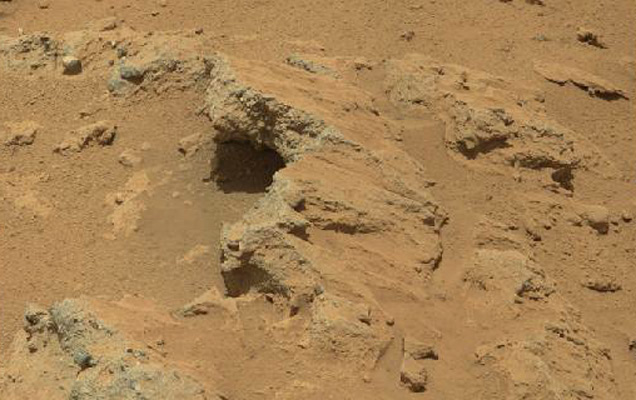
Billions of years ago, enough water flowed down from the rim of Gale crater to carry gravel to the middle of the crater floor - where the Curiosity rover found and imaged it 3 weeks ago, the NASA mission’s team members reported in a press conference today. The broken face of a 15-centimeter-thick layer of rock?perhaps tilted into view by a nearby small impact - shows off bits of rock worn into pebbly roundness as they tumbled down a nearby slope in a torrent of water. Later, the gravel became encased in water-deposited minerals. Other rovers have found evidence of salty ground water or evanescent puddles of brine. And orbital imaging has shown that the nearby slope in Gale was surely a so-called alluvial fan; the cone-shaped feature formed when sediment-laden water spilled down the crater wall. But Curiosity’s discovery will let researchers infer a great deal more about this particular ancient water on Mars. Unfortunately, gravel laid down in torrential flows is about the worst sort of deposit to search for traces of ancient life. As demonstrated on Earth, the organic remains of long-ago life are far better preserved in the muddy deposits of a quiescent lake bottom.

